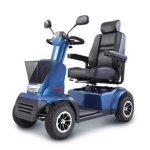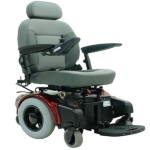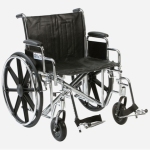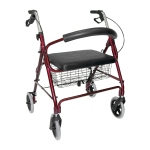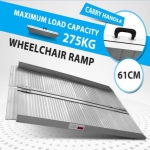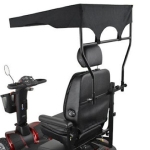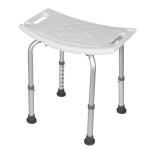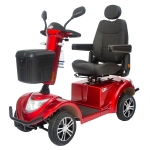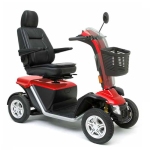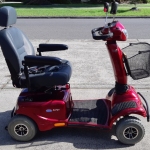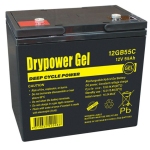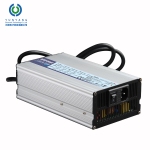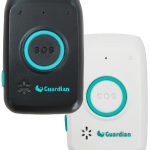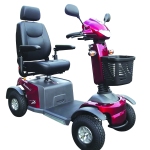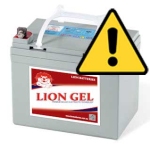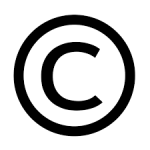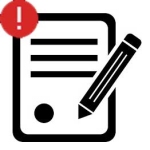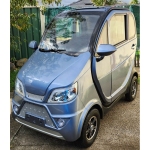Batteries EEC Regs For VRLA Batteries
Mobility Scooters for Hire, Electric Wheelchairs, Manual Wheelchairs, Walkers, Batteries, VRLA Regulations We specialise in DEEP CYCLE BATTERIES
VRLA Batteries
February 2011
Statements
EEC regulations
Pbq declares that all pbq Valve Regulated Lead Acid (VRLA) batteries comply to the following European Directives:
- 2006/66/EC on batteries and accumulators and waste batteries and repealing Directive 91/157/EEC
- 2002/96/EC on waste electrical and electronic equipment (WEEE)
- 2002/95/EC on restriction of hazardous substances in electrical and electronic equipment (RoHS)
Transport
Maintenance free, Valve Regulated Lead Acid (VRLA) batteries are a separate group and do NOT fall under the category of starter batteries, open industrial batteries or traction batteries. Therefore they can be transported without special marking and instructions. However, these batteries need to be collected separately for waste disposal.
Markings
As of the 31st of December 1994, every Valve Regulated Lead Acid (VRLA) battery has to have the symbols present in conformance to EG-guideline 93/86/EWG: a “crossed out waste container” and the abbreviation “Pb” indicating the contents of lead.
Air Transport
Maintenance free, Valve Regulated Lead Acid (VRLA) batteries are recognised by the I.A.T.A. (International Air Transport Association) as “non-spillable”. Flame Retardant ABS casing. All VdS approved batteries, Long Life, Front Access as well as the Single Cell batteries are accomplished in Flame Retardant . ABS casing. Their conformance in based on the UL94 V0.REACH Statement.Pbq declares compliance with all obligations resulting from the REACH regulation.
January 2009
To: Users and transporters of pbq batteries
Subject: Transportation requirements in accordance with the Department of Transportation (D.O.T.) / International Air Transport Association ( I.A.T.A.) dangerous goods regulations as applied to pbq VRLA batteries .
We hereby certify that the batteries known as the pbq valve regulated lead acid batteries are exempt from dangerous goods regulations under the ADR regulations (road transport), IMDG code (sea transport) and the IATA regulations (air transport).Proper shipping name: Batteries, Wet, Non-spillable. Electric Storage UN number : 2800
These batteries are exempt in the ADR regulations under special provision #238 (b) as can be found in chapter 3.3 of the ADR regulations.These batteries are exempt in the IMDG code under special provision #238 (2) as can be found in chapter 3.3 of the IMDG code.These batteries are exempt in the IATA Dangerous Goods Regulations 52nd edition under special provision #A67 as can be found in chapter 4.4 of the IATA Dangerous Goods Regulations 52nd edition.
For questions or in case of emergency, please contact:
Phone: +31 (0)23 – 531 9080
Fax: +31 (0)23 – 531 6142
Email: info@pbq-batteries.com
VRLA Batteries – February 2011
- Product identification: pbq Valve regulated lead acid battery
- Composition & Hazards identification
- Component % weight Oshapel (tlv)
- Classification
- Main Hazard
- Lead Pb, PbO
- PbSO4 65-75% 0.050mg/m3 Toxic
- Sulphuric Acid 17-30% 1mg/m
- 3 Corrosive R35; cause severe burns
- Fibreglass separator 5% n/a
- 3 n/a n/a
- Container (ABS or PP) 5% n/a
- 3 n/a n/a
First aid measures
Lead
- The toxic effects of lead are accumulative and slow to appear.
- It affects the kidneys, reproductive and central nervous systems.
- It affects the kidneys, reproductive and central nervous systems.
- The symptoms of lead over exposure are anaemia, vomiting, headache, stomach pain (lead colic), dizziness, loss of appetite and muscles and joint-pains.
- Exposure to lead from a battery most often occurs during lead reclaim operation through the breathing or ingestion of lead dusts and fumes.
- This sheet must be passed to any scrap dealer or smelter when the battery is resold.
First aid measures when exposed to lead
- Eyes Check for and remove any contact lenses.
- In case of contact, immediately flush eyes with plenty of water for at least 15 minutes.
- Get medical attention if irritation occurs.
- Skin Wash with soap and water.
- Cover the irritated skin with an emollient.
- Get medical attention if irritation develops.
- Inhalation If inhaled, remove to fresh air.
- If not breathing, give artificial respiration.
- If breathing is difficult, give oxygen. Get medical attention.
- Ingestion Do NOT induce vomiting unless directed to do so by medical personnel.
- Never give anything by mouth to an unconscious person.
- If large quantities of this material are swallowed, call a physician immediately.
- Loosen tight clothing such as a collar, tie, belt or waistband.
Sulphuric acid
- Sulphuric acid is a strong corrosive.
- Contact with the acid can cause severe burns to the skin and eyes.
- Ingestion of sulphuric acid will cause gastro intestinal tract burns.
- Acid can be released only from pbq batteries if the case is damaged or the battery is tampered.
First aid measures when exposed to sulphuric acid
- Skin Remove affected clothing and wash all exposed skin area with mild soap and water, followed by warm water rinse.
- Seek medical advice, especially if contact area is large or when blisters are formed.
- Eye Rinse immediately with plenty of water and seek medical advice.
- Ingestion Rinse mouth immediately and call a physician. Do not induce vomiting.
- Inhalation Allow the affected person to rest.
- Remove to fresh air and seek medical advice.
- Do not give anything to an unconscious person.
Fire fighting measures
- Component Flash point Explosive limits Comments
- Lead none none Use “ABC” Type fire extinguisher for battery fires
- Sulphuric acid none none none
- Hydrogen or greater). To avoid the chance of fire or explosion, keep sources of ignition far away
- from the battery. Extinguishing media: dry medical, foam, CO.
- Fibreglass separator n/a n/a Toxic vapours may release. In case of fire: wear self-containing breathing apparatus
- ABS none n/a Danger: vapours may cause flash fire. Harmful or fatal if swallowed.
- PP none n/a Temperatures over 300ºC may release combustible gases.
- In case of fire: wear self containing breathing apparatus.
Accidental release measures
Personal precautions
- Do not wear metal rings, necklace, bracelets, watches, etc. to avoid incidental shorts of the poles. This will cause severe burns.
- Release of electrolyte, sulphuric acid, caused by damaged casing or tampered vents, are direct hazard for personal health. In case of released electrolyte use rubber cloves and protective goggles while cleaning up.
Environmental precautions
- Release of electrolyte, sulphuric acid, caused by damaged casing or tampered vents, are direct hazard for the environment.
- Electrolyte is strong corrosive. Do not dispose spilled electrolyte in waste bin or sewerage. Dispose as chemical waste.
Methods for cleaning up
- Electrolyte can be neutralized with sodium bicarbonate (baking powder), sodium carbon (soda ash) or calcium oxide (lime).
- Flush the polluted area with water and discard to the sewer. Do not dispose un neutralised acid in the sewerage.
Handling and storage
Handling
- Charge VRLA batteries in ventilated areas.
- Lead acid batteries may generate hydrogen gas (H2) during charging.
Storage
- Store VRLA batteries on a dry place.
- Verify the floor load when storing large amounts of VRLA batteries.
Specific use
- Do not short the poles. Shortcutting the poles will cause extreme heat and sparks.
Exposure control
Occupational exposure control
- There are no special individual protection measures required while working with VRLA batteries. Individual protection is required when the battery is damaged or tampered.
Respiratory protection
- In general there is no respiratory protection required in case of minor electrolyte spill. Use self contained breathing apparatus at major spills of electrolyte
- Use rubber cloves when treating damaged or tampered VRLA batteries.
Exposure control
Occupational exposure control
- There are no special individual protection measures required while working with VRLA batteries. Individual protection is required when the battery is damaged or tampered.
Respiratory protection
- In general there is no respiratory protection required in case of minor electrolyte spill. Use self contained breathing apparatus at major spills of electrolyte
- Use rubber cloves when treating damaged or tampered VRLA batteries.
- MSDS – VRLA Batteries – February 2011
- MATERIAL SAFETY DATA
Hand protection
- Use rubber cloves when treating damaged or tampered VRLA batteries.
Eye protection
- Use safety goggles when treating damaged or tampered VRLA batteries.
Skin protection
- Wear long sleeves and trousers when treating damaged or tampered VRLA batteries.
Environmental exposure control
- Prevent sulphuric acid (electrolyte) and lead from ending in sewerage, trash bin, open water or environment.
- Treat components and disposed VRLA batteries as chemical waste.
- Treatment of wasted batteries is regulated by law within the European community in directive 2002/96/EC WEEE.
- pbq batteries comply to the directive 2002/96/EC.
Physical and chemical properties Melting Solubility Component Density point in water Odour Appearance
- Lead 11.34gm/cm 328ºC none none Silver-grey metal
- Lead Sulphate 6.20gm/cm 1167ºC 0.43mg/l none White powder
- Lead Dioxide 9.375gm/cm 290ºC none none Brown powder
- Sulphuric Acid 1.290gm/cm 113ºC 100% none Clear liquid
Stability and reactivity
Conditions to avoid
- Do not short the poles of a VRLA battery.
- The battery may cause extreme heat and sparks.
- Do not use a VRLA battery is areas with a risk of flammable gasses or substances.
- Connecting a VRLA battery to a load may cause sparks. Only charge VRLA batteries in ventilated areas.
- Overcharged (Ucharge > 2.4V/cell) Lead Acid batteries generate hydrogen (H2).
Materials to avoid
- Do not use electrical conducting materials and liquids near batteries.
- Do not work on electrical conducting surfaces with batteries.
Hazardous decomposition products
- When Lead acid batteries are charged with a charge voltage higher than 2.4V.cell, it will generate hydrogen (H2) and oxygen (O2).
- These two gasses are extremely explosive. Follow the technical data sheet of the corresponding product in order to avoid dangerous situations.
Toxicological information
Toxicological info regarding Electrolyte (sulphuric acid)
Effect by inhalation:
Acid mist from formation process may cause respiratory irritation, remove from exposure and apply oxygen if breathing is difficult
Effect on skin contact:
Acid may cause irritation, burns and ulceration. Flush with plenty of soap and water, remove contaminated clothing, and visit physician if contact area is large or if blisters form.
Effect on eye contact:
Acid may cause severe irritation, burns cornea damage and blindness. Call Physician and flush with water until physician arrives.
Effect by ingestion:
Acid may cause irritation of mouth, throat, esophagus and stomach. Call physician. If patient is conscious, flush mouth with water, have the patient drink milk or sodium bicarbonate solution.
Effect by inhalation:
May cause respiratory tract irritation. Inhalation of fumes may cause metal fume fever, which is characterized by flu-like symptoms with metallic taste, fever, chills, cough, weakness, chest pain, muscle pain and increased white blood cell count. May cause effects similar to those described for ingestion.
Effect on skin contact:
Causes skin irritation. May be absorbed through the skin.
Effect on eye contact:
Causes eye irritation
Effect by ingestion:
Causes gastrointestinal irritation with nausea, vomiting and diarrhea. Ingestion of lead compounds can cause toxic effects in the blood-forming organs, kidneys and central nervous system. Symptoms of lead poisoning or plumbism include weakness, weight loss, lassitude, insomnia, and hypotension. It also includes constipation, anorexia, abdominal discomfort and colic.
Chronic:
Chronic exposure may cause reproductive disorders and teratogenic effects. Chronic exposure to lead may result in plumbism which is characterized by lead line in gum, headache, muscle weakness, mental changes.
Ecological information
- In most surface water and groundwater, lead forms compounds with anions such as hydroxides, carbonates, sulphates, and phosphates, and precipitates out of the water column.
- Lead may occur as sorbed ions or surface coating on sediment mineral particles or may be carried in colloidal particles in surface water.
- Most lead is strongly retained in soil, resulting in little mobility.
- Lead may be immobilized by ion exchange with hydrous oxides or clays or by chelation with humic or fulvic acid in the soil. Lead (dissolved phase) is bio accumulated by plants and animals, both aquatic and terrestrial.
Disposal considerations
- Lead-acid batteries are completely recyclable.
- Return whole scrap batteries to distributor, manufacturer or lead smelter for recycling.
- For neutralized spills, place residue in acid-resistant containers with sorbent material, sand or earth and dispose of in accordance with local, state and federal regulations for acid and lead compounds.
- Contact local and/or state environmental officials regarding disposal information.
- pbq batteries comply with the European Directives 2006/66/EC.
Transport information
- pbq Valve regulated lead acid batteries are exempt from dangerous goods regulations under the ADR regulations (road transport), IMDG code (sea transport) and the IATA regulations (air transport).
- Proper shipping name: Batteries, Wet, Non-spillable. Electric Storage – UN number: 2800
- These batteries are exempt in the ADR regulations under special provision #238 (b) as can be found in chapter 3.3 of the ADR regulations.
- These batteries are exempt in the IMDG code under special provision #238 (2) as can be found in chapter 3.3 of the IMDG code.
- These batteries are exempt in the IATA Dangerous Goods Regulations 52nd edition under special provision #A67 as can be found in chapter 4.4 of the IATA
- Dangerous Goods Regulations 50nd edition.
Regulatory information
- According to the European directive 2006/66/EC every single pbq battery is provided with a disposal sign and the text “Pb”. Pb
- Additional each pbq battery is labeled with the text “RoHS”, indicating that it complies to the 2002/95/EC and 2002/96/EC directives.

